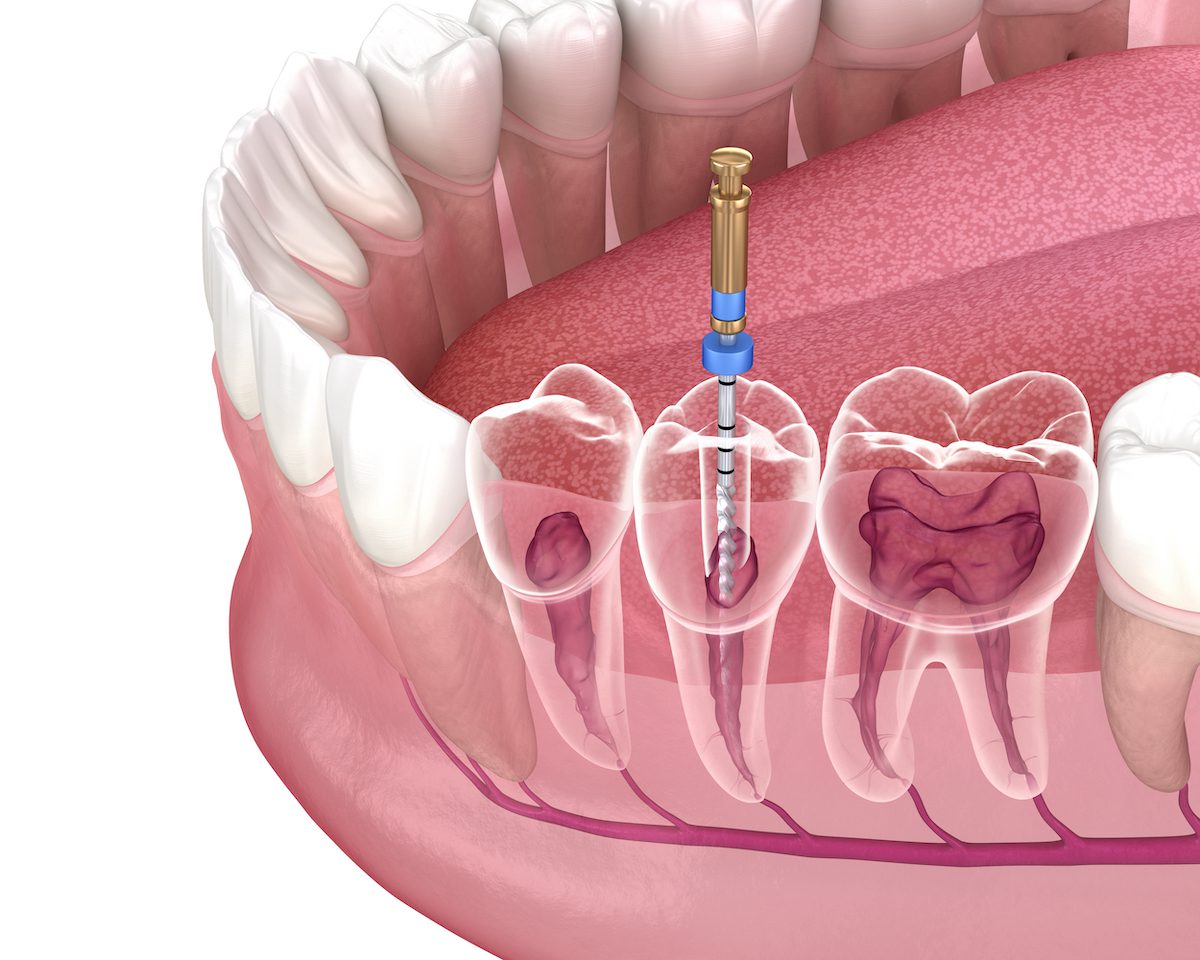✨Book online and enjoy a 5% discount on your first consultation
Home » Dental Services » Root Canal Treatment

Root Canal Treatment
Root canal treatment is a medical treatment to save an infected or damaged tooth by repairing it instead of removing it. The term ‘root canal’ signifies the cleaning of the canals present in the root of your tooth.
There is a strong fear associated with root canal treatment. This is because, in earlier days, this treatment involved a whole lot of pain. However, with recent advancements in the medical field, there is little to no pain involved with it now.
This dental procedure requires removing the soft center of your tooth, which is known as the pulp. Made of blood vessels, nerves, and connective tissues, this pulp is responsible for the growth of your tooth. Usually, an endodontist or dentist will conduct a root canal while you are under local anesthesia.
Possible Causes
You need to go for a root canal treatment when the pulp of your tooth gets infected or inflamed. Even though the crown of your tooth, which is the outer portion of your tooth above your gums that you can see, is healthy, the pulp can be dead.
Removing the pulp would help in saving the structure of your tooth. The pulp can get injured or infected because of various reasons, including a crack or chip in the tooth, numerous dental procedures performed on the same tooth, decay resulting from an untreated cavity, or an injury resulting from hitting the mouth.
Risk Factors
A root canal procedure is performed to save your tooth. However, when the damage is too deep or the enamel is too frail, there are chances you may lose a tooth.
Some people are more at risk of developing tooth infections that might lead to a root canal. These risk factors are:
Signs and Symptoms
The major symptoms to look for are a sensation of heat in your gums, swelling of the gums, and acute pain in your tooth. Our dentist might recommend you to go for an x-ray to diagnose the root canal.
Diagnosis
Looking for root canal problems is part of the everyday routine of a dentist. They detect tooth decay by:
Treatment Options at 7DMC
A root canal is an extremely delicate procedure and should be undertaken under the strict supervision of a trained professional in certified dentistry. 7DMC provides exemplary dentist services and helps you in maintaining the guidelines before and after the procedure.
Follow-up after a treatment like this is essential, which 7DMC makes sure you do. In this follow-up meeting, additional x-rays might be done to ensure the infection is completely gone. If pain persists, you might be given pain medications too. Your temporary filling would be replaced by a permanent filling as well.
You might also opt to get a dental crown, which is made of porcelain or gold. Crowns help achieve a more realistic appearance.
A root canal treatment begins with your dentist placing numbing medication on the affected gum. After this, he or she will inject local anesthesia. You might feel a slight tingling or burning sensation immediately, but it is completely normal and would last for a few seconds only.
Next, a small opening would be made on the top of the infected tooth, followed by removing the pulp using special tools known as files.
Once the canals are cleared, and the pulp is removed, your dentist will coat the area with a topical antibiotic to prevent reinfection. Next, he or she will fill and seal your tooth with gutta-percha, which is a rubber-like material.
Finally, the opening on the top of your tooth will be filled with a temporary, soft material to protect it from saliva and you might be prescribed oral antibiotics.
Deep decay, repeated dental procedures, and large fillings can make your tooth nerves and pulp inflamed. Trauma to the face followed by a crack in the tooth can also damage tooth nerves.
Despite a dentist’s best efforts, a new infection might emerge. Some of the common reasons for reinfection are:
Near Dubai Miracle Garden,
Diamond Business centre A,
1st Floor,
Arjan, AI Barsha,
Dubai.
WhatsApp us